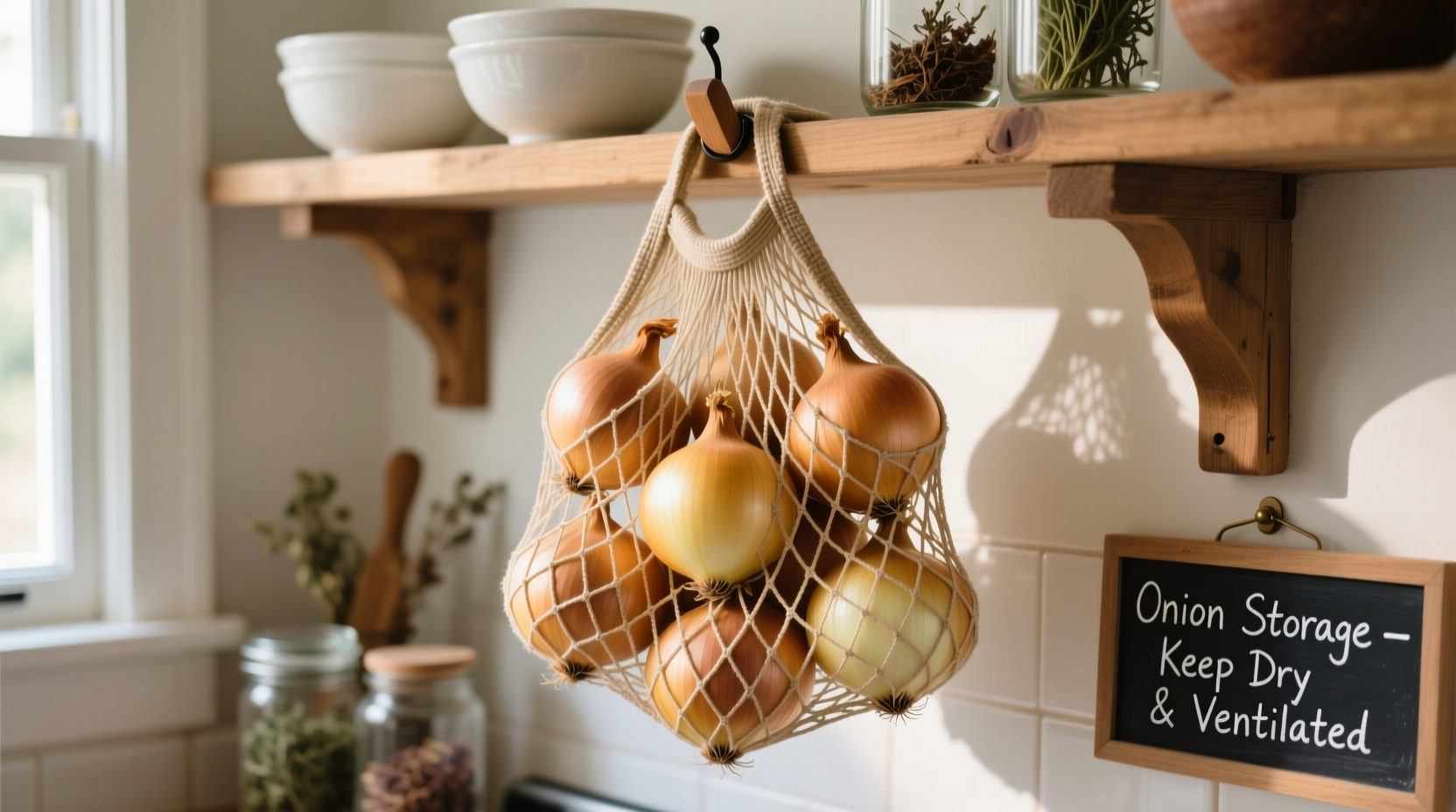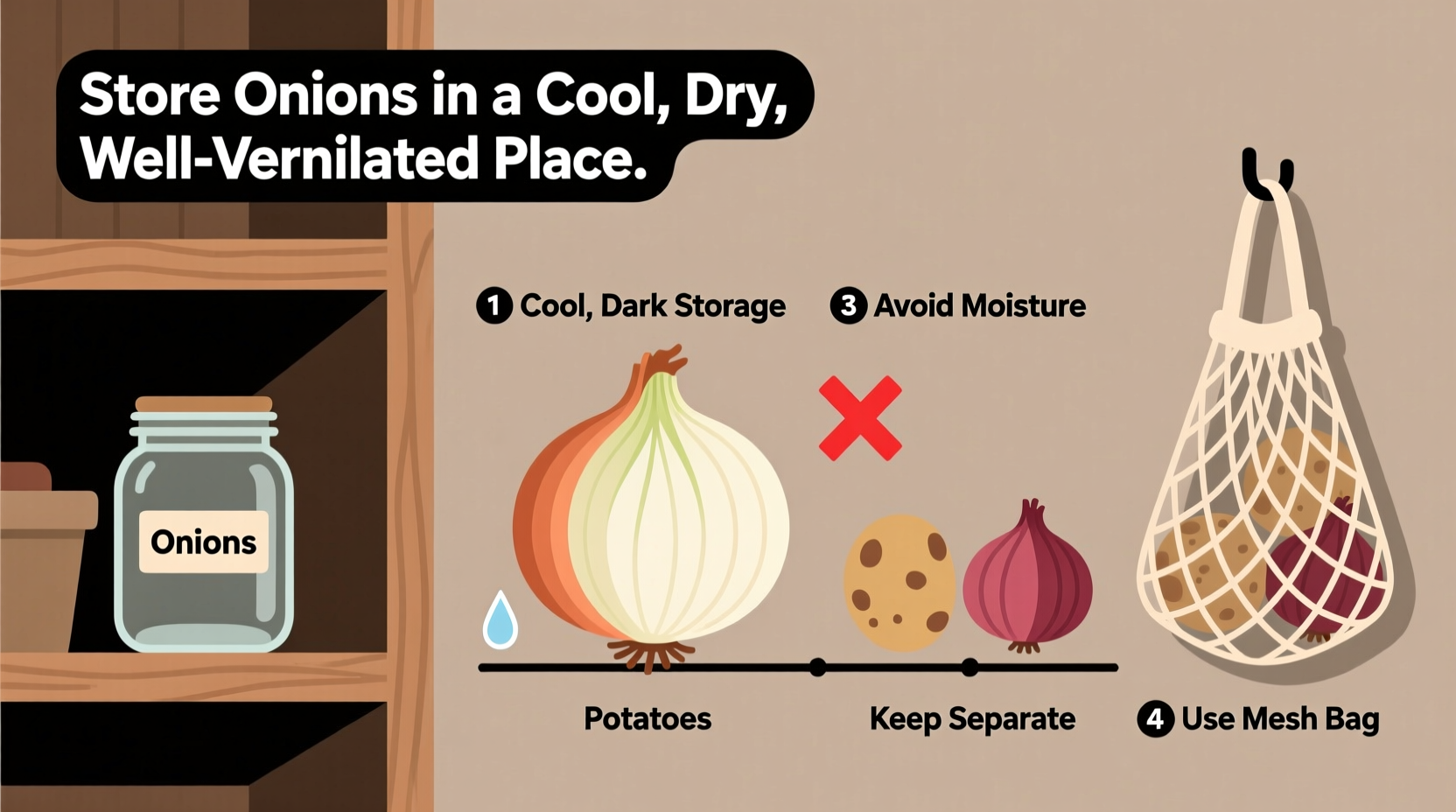Discover exactly how to extend your onions' shelf life while preserving flavor and texture. Whether you're dealing with sweet Vidalias, pungent yellow onions, or delicate shallots, proper storage prevents premature sprouting, mold growth, and flavor degradation. This guide reveals professional techniques backed by food science to keep your onions fresh 2-3 times longer than typical methods.
Understanding Onion Types and Their Storage Needs
Not all onions share the same storage requirements. Sweet varieties like Walla Walla contain more water (89% vs. 83% in yellow onions), making them more perishable. Storage duration varies significantly by type:
| Onion Type | Optimal Temperature | Relative Humidity | Expected Shelf Life |
|---|---|---|---|
| Yellow Onions | 45-55°F (7-13°C) | 65-70% | 2-3 months |
| Sweet Onions | 32-40°F (0-4°C) | 65-70% | 3-4 weeks |
| Shallots | 50-60°F (10-15°C) | 60-65% | 1-2 months |
| Green Onions | 32-36°F (0-2°C) | 90-95% | 10-14 days |
This data aligns with USDA storage recommendations for bulb vegetables, which emphasize temperature and humidity control as critical factors in preventing enzymatic browning and microbial growth. The National Onion Association confirms that improper storage causes 30% of household onion waste annually.
Whole Onion Storage: Room Temperature Methods
For most yellow and red onions, room temperature storage works best. Follow these steps for maximum longevity:
- Prepare properly: Never wash onions before storage—moisture accelerates decay. Gently brush off dirt but preserve the dry outer skin.
- Choose breathable containers: Use mesh bags, bamboo baskets, or paper bags with holes. Avoid plastic bags or sealed containers that trap moisture.
- Ensure proper spacing: Store onions individually with space between them to allow air circulation. The UC Davis Postharvest Technology Center notes that crowding increases ethylene concentration, speeding spoilage.
- Monitor conditions: Ideal storage areas maintain 45-55°F (7-13°C) with 65-70% humidity. Basements, pantries, or garages often work better than kitchen cabinets near heat sources.

Cut Onion Preservation Techniques
Once cut, onions require immediate refrigeration. Follow this professional method:
- Place cut surfaces down on a clean cutting board
- Wrap tightly in beeswax wrap or place in airtight glass container
- Store in the main refrigerator compartment (not the door)
- Use within 7 days for best quality
Food safety experts at the FDA confirm that cut onions remain safe for 7-10 days when stored below 40°F (4°C). For extended storage, freeze chopped onions in single layers on baking sheets before transferring to freezer bags—this prevents clumping.
Common Storage Mistakes That Ruin Onions
Avoid these frequent errors that shorten onion shelf life:
- Storing with potatoes: Both emit gases that accelerate each other's decay. The University of Idaho Extension reports this combination reduces shelf life by 40%.
- Refrigerating whole bulbs: Cold moisture causes texture degradation in non-sweet varieties. Exceptions include sweet onions and shallots.
- Keeping in original mesh bags: Supermarket bags often have too-tight weaves. Transfer to looser containers for better airflow.
- Ignoring sprouting signs: Early sprouting indicates improper storage conditions. Use sprouted onions immediately.
Special Cases: Long-Term Onion Preservation
For gardeners with surplus harvests or bulk buyers, consider these extended storage options:
- Curing onions: After harvest, dry onions in shaded, ventilated area for 2-3 weeks. The National Center for Home Food Preservation recommends this for maximum storage potential.
- Freezing chopped onions: Blanch for 3 minutes, cool, then freeze in portion-sized bags for 6-8 months.
- Pickling: Vinegar-based solutions preserve onions for 6 months in refrigeration.
Remember that freezing changes texture but preserves flavor for cooked dishes. Raw applications require fresh onions for optimal crispness.
When Storage Goes Wrong: Troubleshooting Guide
Identify and address common storage issues:
- Mold development: Caused by excessive humidity. Move to drier location and wipe with vinegar solution.
- Soft spots: Indicates beginning decay. Cut away affected areas if minimal; otherwise discard.
- Excessive sprouting: Results from warm storage temperatures. Use immediately or compost.
- Strong odor transfer: Onions absorb surrounding smells. Store away from strong-smelling foods.











 浙公网安备
33010002000092号
浙公网安备
33010002000092号 浙B2-20120091-4
浙B2-20120091-4